Seoul is a captivating city that seamlessly weaves modernity and history into a harmonious tapestry. In the midst of the city's bustle, tranquil palaces testify to the city's unique allure. Travel back in time to the magnificent "Changdeokgung Palace," which kings adored for its enchanting gardens.
Blended in harmony with nature,
Introduction to Changdeokgung Palace
Changdeokgung Palace is the only one of Seoul's five grand palaces to be designated as a UNESCO World Heritage Site. Originally intended to serve as a royal retreat in times of war or disaster, its pivotal role as a royal residence began following the unfortunate demise of Gyeongbokgung Palace. During the reign of King Gwanghae, it became the primary residence of the Joseon Dynasty's kings, with the longest tenure. Changdeokgung Palace is distinguished by its organic integration with the surrounding landscape, as opposed to its counterparts' meticulously structured layout. Its illustrious legacy is defined by its seamless integration with nature and the preservation of its distinctive circular design, which earned it UNESCO World Cultural Heritage status in 1997. A visit to this palace, which is conveniently located near Changgyeonggung Palace and Jongmyo Shrine, promises a thorough exploration of Korea's regal history.
Recommended route for a seamless exploration
Recommended sightseeing course
Donhwamun Gate → Geumcheongyo Bridge → Gwolnaegaksa → Injeongmun Gate → Injeongjeon Hall → Seonjeongjeon Hall → Huijeongdang Hall → Daejojeon Hall → Nakseonjae Hall
Secret Garden Entrance → Buyongji Pond → Aeryeonji Pond → Jondeokjeong Pavilion → Okryucheon Stream → Yeongyeongdang → Donhwamun Gate · Estimated time: 2 hours 30 minutes in total
The more you learn, the more enjoyable it will be.
Brief description of each course
- Donhwamun Gate
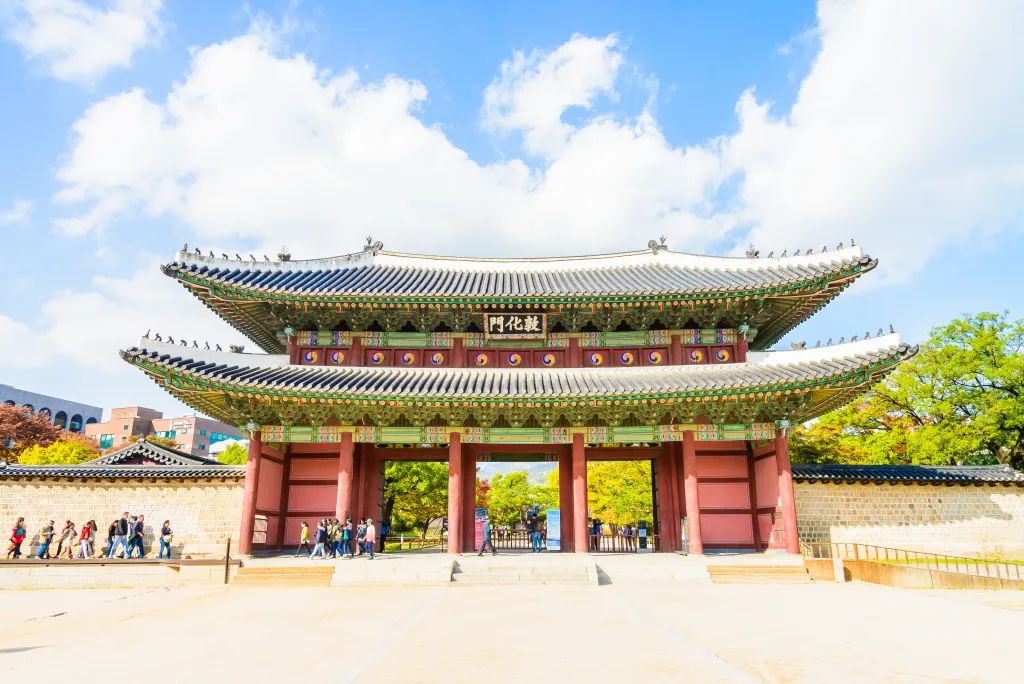
shutterstock.com
Changdeokgung Palace's main gate and the oldest palace gate still standing. The main gate and main hall are not aligned in a straight line, which distinguishes it from Gyeongbokgung and Changgyeonggung Palace. The wide Woldae Staircase reflects the palace gate's grandeur.
- Injeongjeon Hall

shutterstock.com
The Changdeokgung Palace's central building is Injeongjeon Hall. It hosted national events such as the king's coronation ceremony and meetings with foreign envoys. It appears to have two stories, but when you look inside, you can see a magnificent high ceiling because it only has one floor.
- Seonjeongjeon Hall
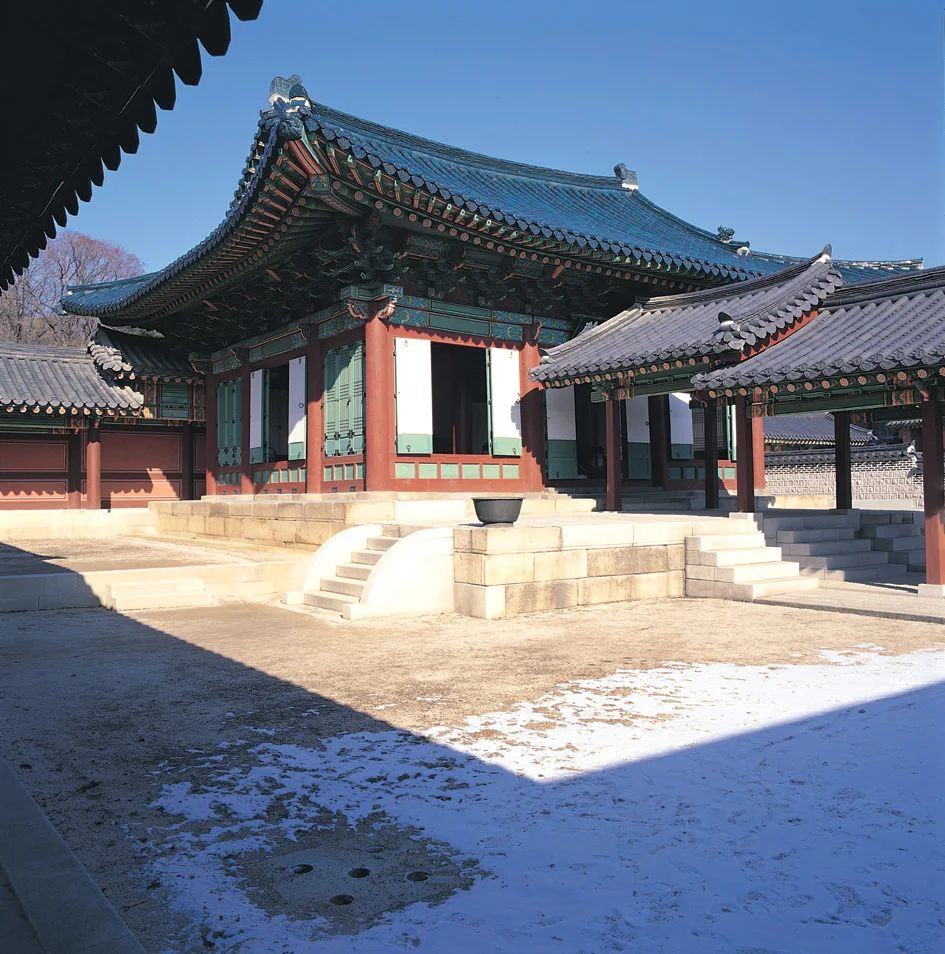
Korea Cultural Heritage Administration
"Pyeonjeon" is where the king discussed state affairs with his officials. It is the palace's only structure with blue roof tiles. In the late Joseon Dynasty, the Pyeonjeon was relocated to Huijeongdang Hall and used as a "Honjeon" to house the ancestral tablets of deceased kings and queens.
- Huijeongdang Hall
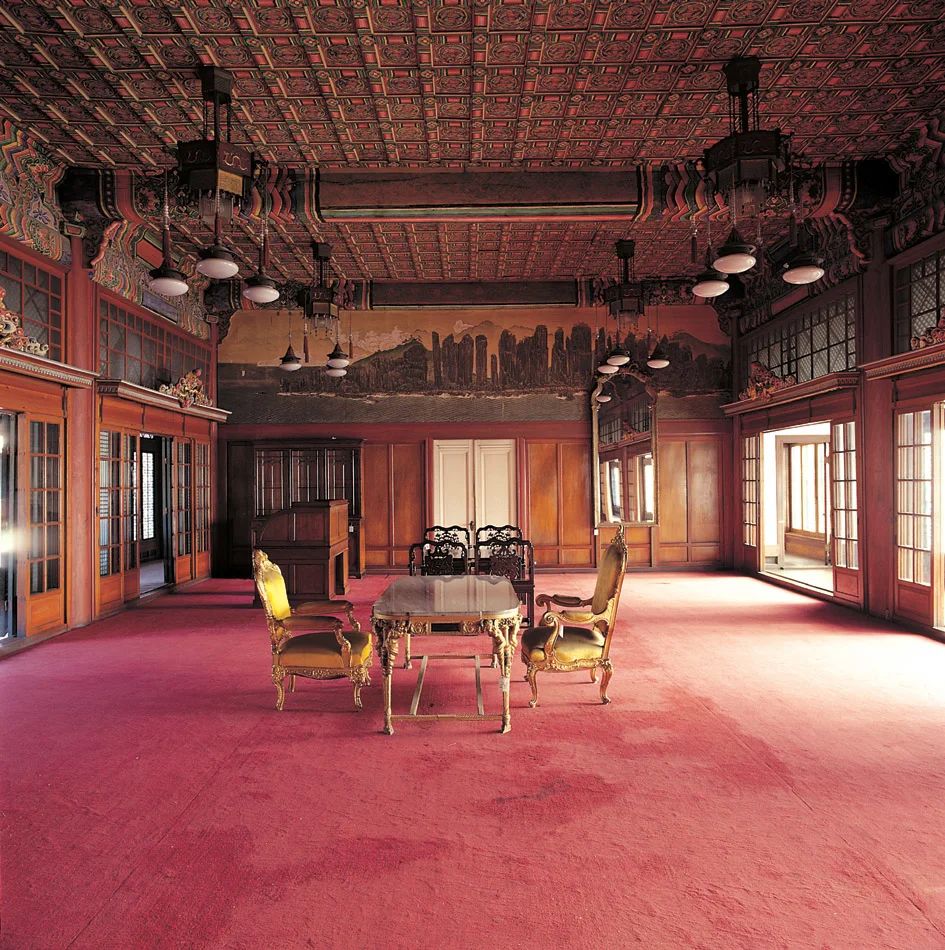
Korea Cultural Heritage Administration
This structure combines traditional and modern architecture. It was destroyed by fire in 1917 but was rebuilt in 1920 with a mix of traditional and modern elements such as tables, chandeliers, and glass windows. The interior is only accessible during special exhibitions.
- Nakseonjae Hall
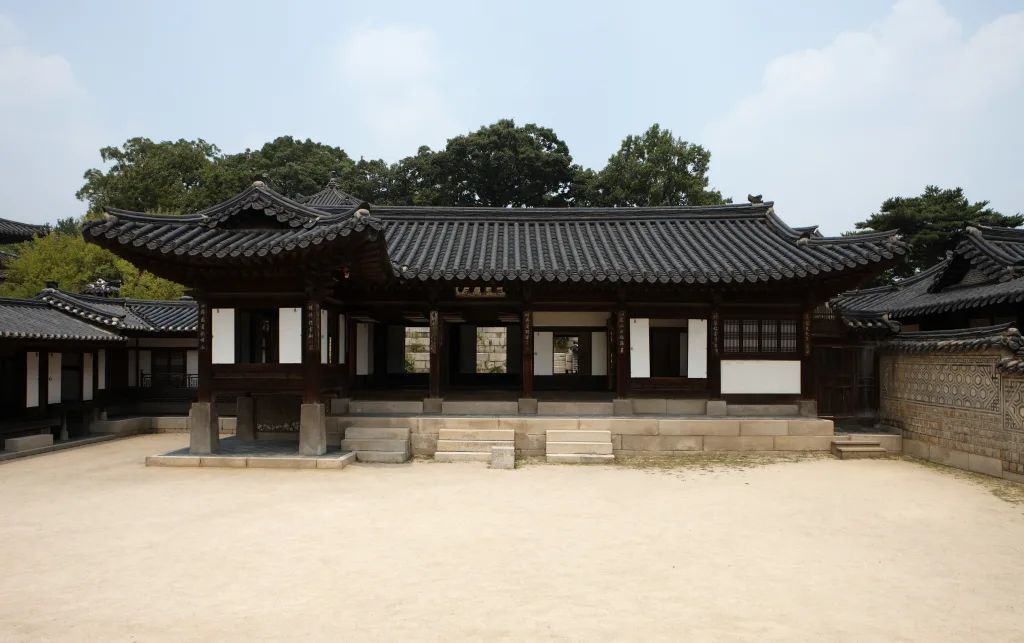
Korea Cultural Heritage Administration
This space was once used as a study and Sarangchae (a section of a house reserved for men and guests) by King Heonjong. It's right next to Changgyeonggung Palace. The building lacks the elaborate traditional "Dancheong (Korean arts of painting buildings)" with vibrant patterns, allowing visitors to see King Heonjong's more modest side.
- Buyongji Pond

shutterstock.com
The representative pond of the garden. This large pond 'Juhabru' on the hill, as well as the floating pine tree island in the middle of the pond, inspire admiration. It is the garden's largest pond, covering approximately 1,000 m².
- Aeryeonji Pond
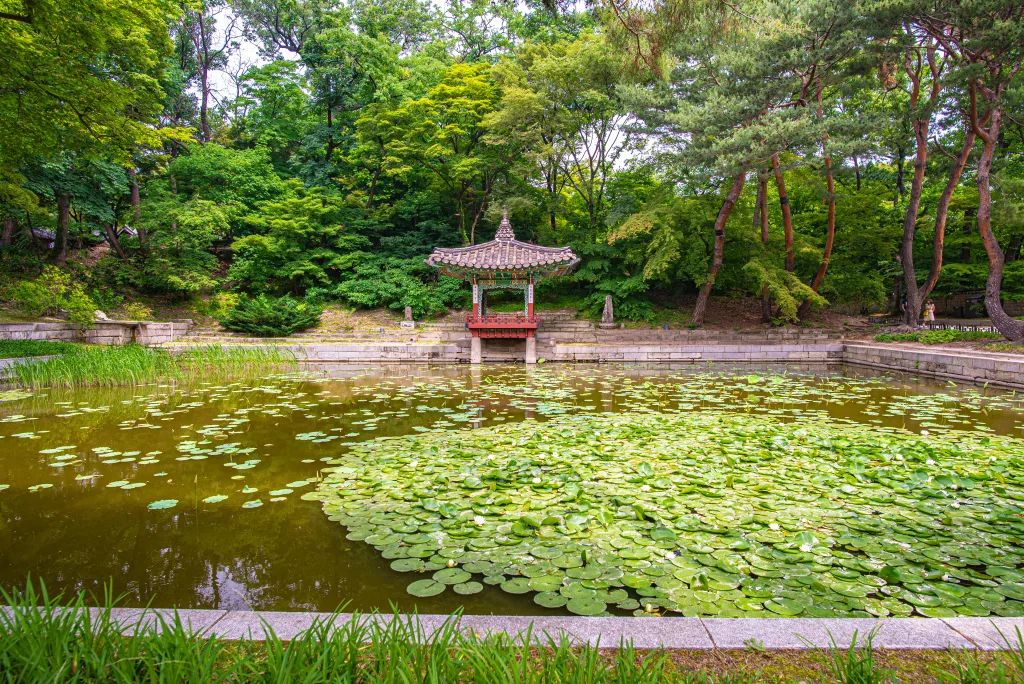
shutterstock.com
A pond representing love for lotus flowers. Its name was given by King Sukjong, who had a particular fondness for lotus flowers. It is not as grand as Buyongji Pond, with only a small pond and a small pavilion, but it has a simple charm.
- Gwanramji Pond
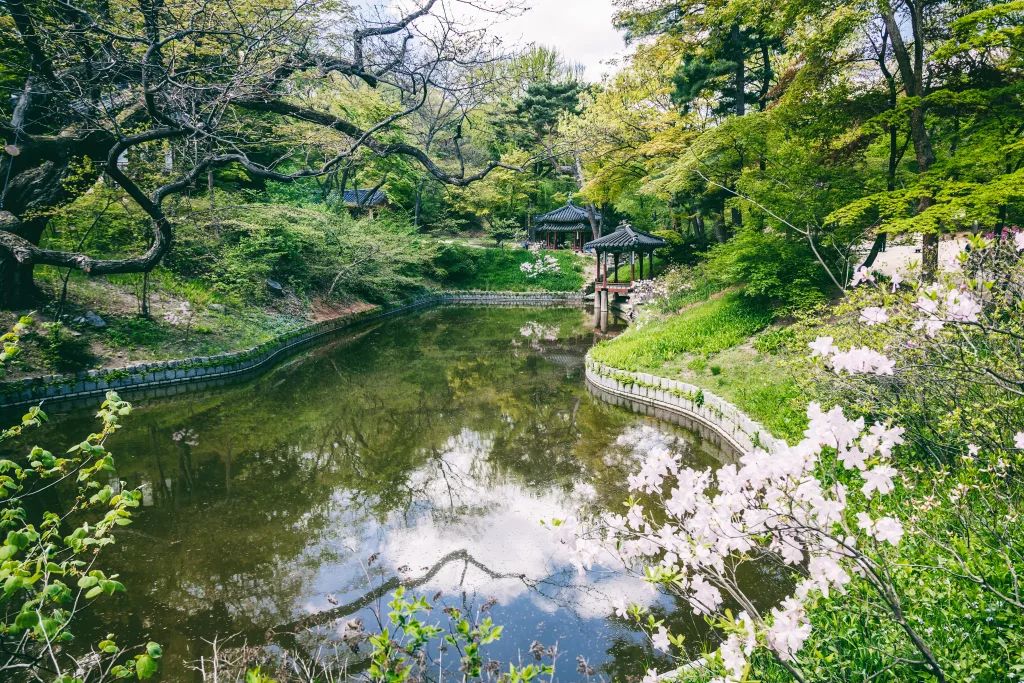
shutterstock.com
The three small ponds merge together to form a long pond. Around the pond, you can see various pavilions such as Jondeokjeong , a hexagonal pavilion, Gwanramjeong, a fan-shaped pavilion, and Seungjaejeong, the pavilion nestled in the forest. This enables you to visit multiple pavilions at the same time.
- Okryucheon Stream

shutterstock.com
A valley that runs through the center of the garden. Small waterfalls have been created by carving rocks and directing water. Small pavilions are scattered throughout the palace, and the 'Cheonguijeong Pavilion,' the only pavilion with a thatched roof, draws visitors' attention.
Taking place in front of a tranquil palace
Changdeokgung Palace photo spots
- Seongjeonggak Pavilion
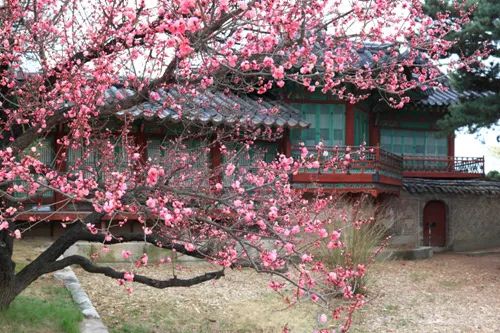
cdg.go.kr/cms_for_cdg/process/photo/view.jsp?nowPage=1&show_no=28&check_no=5&c_relation=55&c_relation2=117&c_no=132#none
The study room of the crown prince, where he lived and studied. In the spring, the palace is adorned with vibrant red plum blossoms, creating an ideal backdrop for taking memorable photos, and 'Seongjeonggak' is the prime location for red plum blossoms.
- Seunghwaru Pavilion
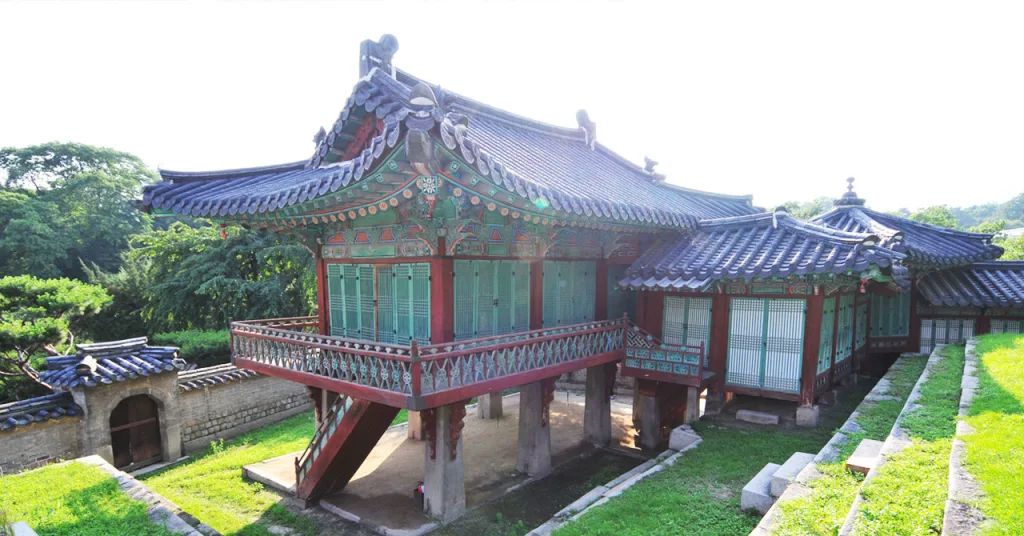
Korea Cultural Heritage Administration
The crown prince used to relax in the library by reading books. In the spring, cherry blossoms bloom profusely on weeping willow-like branches. It is large enough to be seen beyond Nakseonjae Wall.
- Nakseonjae Hwagye

Korea Cultural Heritage Administration
This garden was built by King Heonjong for a royal concubine's quarters. A lovely garden with flowers, plants, and chimneys can be found in the backyard. You can use a variety of flowers as a backdrop in May, including irises, peonies, and royal azaleas.
- Geumcheongyo Bridge

Korea Cultural Heritage Administration
After passing through Donhwamun Gate, there is a bridge visible. The large ginkgo trees create a peaceful atmosphere. You can take even more stunning photos if you cross over to the opposite side of the Geumcheongyo Bridge.
Making Changdeokgung Palace even more special
How to enjoy Changdeokgung Palace to the fullest
The number of people allowed on the guided tour of the secret gardens is limited. In addition to the main palace tour, separate admission tickets must be purchased! Reservations can be made online starting at 10:00 a.m., six days before the desired tour date, on a first-come, first-served basis. Some tickets are also available for purchase on-site beginning at 9:00 a.m. on the day of the tour.
The Okryucheon Stream area is closed to visitors from July to August, as well as from December to February, for safety reasons. Visitors to the Secret Garden are required to join a guided tour.(Guided tour only) Purchasing a Royal Palace Pass does not guarantee entrance to the Secret Garden.
· Price: 5,000 won (Excluding Royal Palace pass) · Operating hours: 10:00 AM - 4:00 PM (1-hour intervals) · Duration: 90 minutes (70 minutes during July-August and December-February) · How to purchase: Online reservation or on-site purchase
The largest traditional cultural festival in Korea is held every May. It is an annual event held at five of Seoul's grand palaces, including Changgyeonggung Palace, Gyeongbokgung Palace, and Changdeokgung Palace, as well as Jongmyo Shrine and Sajikdan Altar. Various programs, such as theater performances, concerts, and traditional ceremonies, are featured on a regular basis. It is especially popular with families because it falls during Family Month, which includes Children's Day.
· Date: Every May (subject to change each year) · Location: Five major palaces in Seoul, as well as Jongmyo Shrine and Sajikdan Altar
It is a traditional cultural event that recreates the past ceremonial changing of the royal guard. It takes place during the late Joseon Dynasty, specifically during King Jeongjo's reign. The procession of guards, dressed in traditional attire and armed with weapons, marches to the beat of Chwitadae (marching band)'s ceremonial music. In addition to the familiar 'Deungpae-su' and 'Jochong-su' shield-wielding guards, there are new guards not seen in other palaces. Visitors can also learn about traditional weapons like the Jochong (matchlock) and Dengpae (shield).
· Time: Between April and May every year · Location: Donhwamun Gate and the surrounding area of Geumhomun Gate
Don't miss out!
Essential tips before sightseeing!
✓ Closed every Monday ✓ Free admission for children under 6 and senior citizens over 65 ✓ Free admission on the last Wednesday of every month ✓ Free admission when wearing a Hanbok (traditional Korean clothing) ✓ Check the entrance times as they vary each month. ✓ Free reservations for guided tours are available on the website. ✓ Enter directly by tapping your transportation card at the entrance, without the need for a separate admission ticket. * Free admission only applies to palace viewings.
